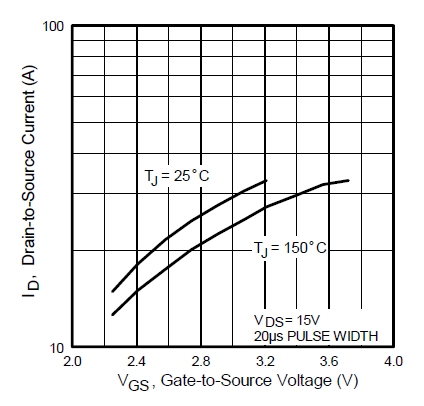Post History
FET source-followers are generally less predictable than BJT (bipolar junction transistor, like NPN or PNP) emitter-followers. An emitter follower output is one diode drop below the input. The vo...
#1: Initial revision
FET source-followers are generally less predictable than BJT (bipolar junction transistor, like NPN or PNP) emitter-followers. An emitter follower output is one diode drop below the input. The voltage across a diode varies little as a function of the current, so this offset remains fairly constant. The absolute voltage across this diode is also reasonably predictable. The input to output drop of a FET source-follower is whatever gate voltage is required to pass the source current. The absolute value of that voltage is less well specified than the drop on a silicon diode. Take a look at <i>gate threshold voltage</i> specifications for some common FETs. I just looked up the IRLML2502 as an example of a low voltage FET meant to be driven with logic level gate voltages. Even this FET is specified for a gate threshold voltage anywhere from 600 mV to 1.2 V, and that's just at 250 µA. Take a look at the typical characteristics of what gate voltage is required to sustain what collector current:  First, notice how little this graph really tells you. It only shows currents from around 15 mA to a bit over 30 mA. It's not of much help if your current is only, 2 mA, for example. Second, notice the rather large change in gate voltage to get different channel currents. Even at the single fixed temperature of 25 °C, it takes 2.5 V to get 20 mA, and over 3 V to get 30 mA. At 150 °C it takes over 3.4 V to get the same 20 mA. Another characteristic to consider is the how much D-S voltage is needed before it not longer matters much:  It takes about 1 V or so at 15 mA, and over 2 V at higher currents. Contrast that to a BJT where this is well under 1 V except at quite high currents for the device. So even for this one example low voltage FET, the G-S voltage varies much more than the B-E voltage of a BJT, and more D-S voltage is required before that stops being much of a dependency. These characteristics are even worse for higher voltage FETs which are usually intended to operate with a 10 V or so gate range. All around, This means that the G-S voltage of a FET is less predictable to start with, and will vary more, than the B-E voltage of a BJT in similar conditions. Since all the G-S or B-E voltage variations show up directly on the output of follower circuits, FETs simply don't make as good followers as BJTs do.


















